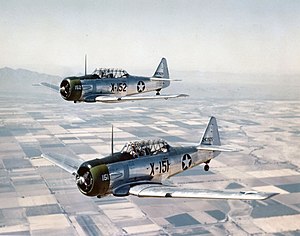
Ask around wherever you live, and I'll bet you'll find more folks 'not from around here' than locals. And I'll also bet the reason they're Here rather than There is simple: Jobs.
Humans have been migrating to improve their prospects since Ice Age hunters crossed the Bering Strait. When I was researching my latest book, I studied immigration patterns of Norwegians to America. It's mind-boggling how many people risked everything for a chance to provide a better situation for themselves and their family. They may not have looked at it as moving for a job opportunity, but that's basically what they were doing.
Migration (as opposed to immigration) patterns are slightly different in that they occur within a country's borders. Just because you don't feel the need to change countries doesn't mean you won't be packing a bag to follow a job. Ask anyone in the armed services. Or at FedEx, which is how our family came to live in seven different cities (and six states) in eighteen years. These migration patterns are equally fascinating to me, perhaps because I have a personal connection.

One of my favorite family tales involves the World War II era. My dad and his brother were born in a small rural town east of Dallas, Texas. They came from a long line of farmers, since those first Norwegian ancestors came to Texas in the 1850s. But the times, they were a-changin'. During the war, manufacturing boomed. Strict immigration laws enacted in the 1920s shut off the supply of foreign labor. Factories couldn't find workers fast enough. When war came and stimulated the manufacturing sector, many jobs were available for workers already living in America, regardless of race or gender. The American work force increased dramatically as rural workers and women joined the ranks.
My paternal grandfather was among the first group. He went to work at the 'bomber plant', aka North American, later known as Ling Tempco Vought or LTV, in the Dallas area. Housing was scarce in the city. At first, he went alone and came home on the weekends. Eventually a room in town became available. Not a house. A room. So my grandmother was able to join him. There was only one problem. They had two sons, and the landlord would only allow one more person to occupy the lease. The decision was made: my dad's younger brother was to go to the big city with his folks. My dad would be left behind with his grandparents on the family farm. (Cue the sad violin music here.) As my dad was telling me this story, I tried to be brave, but I fear I may have experienced some eye sweat. I told him I thought this was one of the saddest things I ever heard. He said, "Why? I loved the farm. It was my home. My granddad spoiled me rotten. I was sad when I eventually had to move to the city with my folks." Shows what I know.
I grew up vaguely aware that my paternal grandfather worked in the war effort. It was only recently as my mom was telling me some of her family lore that I learned her father also came from their farm in rural Texas to work at the bomber plant. The same plant. (You may be wondering: did everyone work at this plant? Actually, yes.) In both cases, the families ended up relocating to Dallas permanently, leaving farm life behind. And if not for this, my parents likely never would have met, and that would have been exceedingly bad luck for me.

My grandfathers didn't have far to migrate for their defense industry jobs, but many others did. Around four million people migrated to a war-related job in the World War II era and afterward. They often moved long distances, even cross-country. There wasn't a bomber plant or shipyard on every corner. They tended to be in northern cities or on the West Coast.
Migration was a societal force within the African American community in particular. They made up about a third of the migration figures quoted above. In 1940, an estimate 45% of African Americans worked on farms. By 1980, that number had shrunk to 1%. Many saw the war industry as an opportunity to escape lower status jobs as well as the Jim Crow segregation laws that dominated areas of the South at that time.
The tides turned again later in the 20th century when lower cost of living, fewer labor unions, and better weather enticed many companies to relocate their operations back into the South. I never met a Yankee or ate a bagel until some time in the 1980s. Now, they're everywhere (including in my house - my husband is from Philadelphia).
I'm very curious to see what the next job migration wave will be, if any. So many people work remotely these days. The next iteration may be greatly simplified. Instead of predicting which part of the country will see an influx of workers, it may just be a matter of determining which room in the house works best as a home office.

This originally appeared as part of the 2016 A to Z Blog Challenge.
Thanks for reading! If you enjoyed this post, I hope you'll take a minute and subscribe to my email list.











 All the hubbub about the Seth Rogen/James Franco comedy
All the hubbub about the Seth Rogen/James Franco comedy 


















